Celebrating 10 Years of Suzaku
Top Ten Science Stories
We are celebrating 10 years of the Suzaku X-ray observatory by highlighting ten science stories that exemplify the science possible through its unique capabilities. These stories fall into three general science categories.
Stories featuring clusters of galaxies
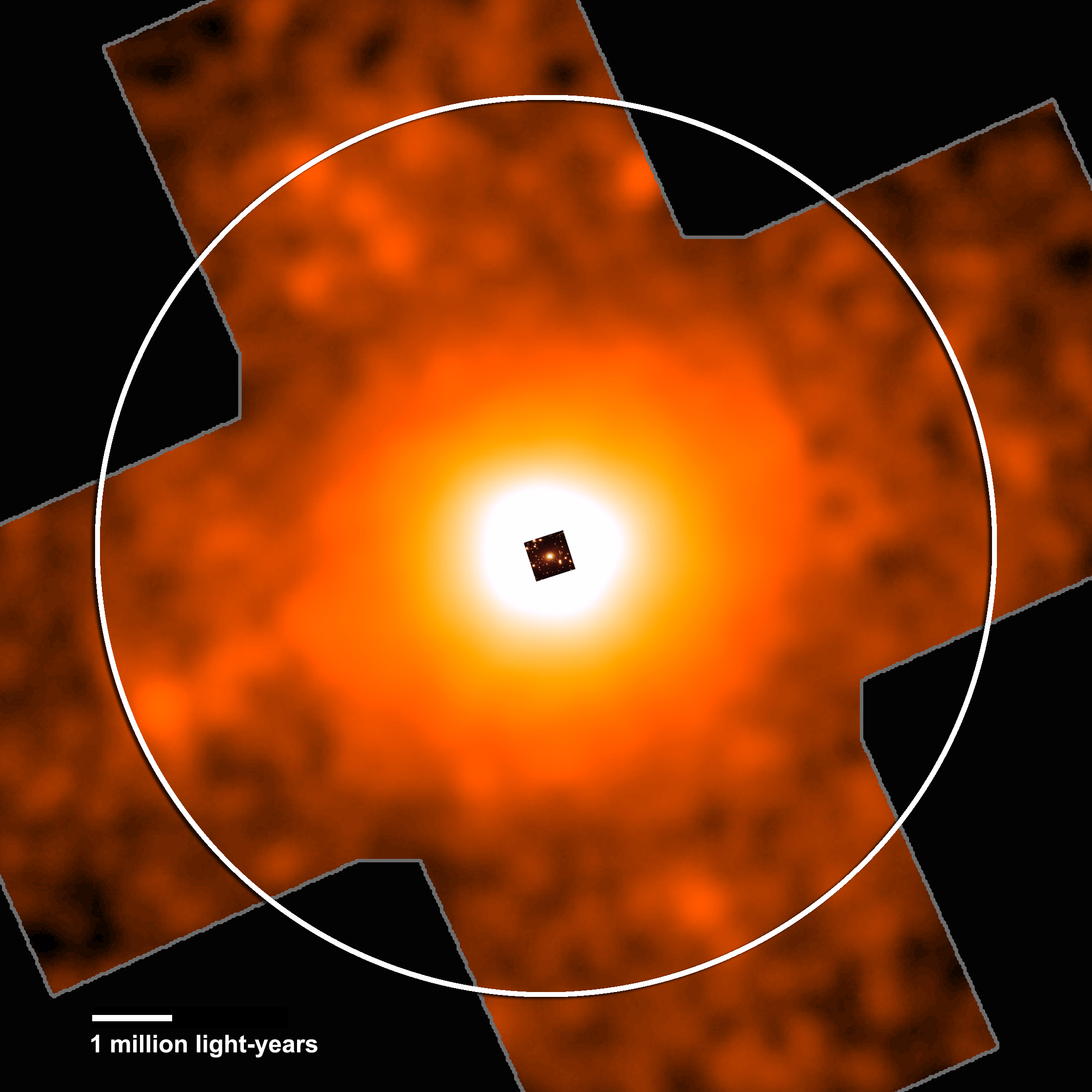
This Suzaku image shows X-ray emission from hot gas throughout the galaxy cluster PKS 0745-191. (Credit: NASA/ISAS/Suzaku/M. George, et al.)
This paper published in 2009 was the first to demonstrate that Suzaku data can be used to study these tenuous X-ray emitting gas in the outskirts of clusters of galaxies. More than the specific findings, this paper is noteworthy for opening a new sub-field of X-ray astronomy that became arguably the most important contribution of Suzaku.

Suzaku's observations across two swaths of the Perseus Galaxy Cluster. (Credits: NASA/ISAS/DSS/A. Simionescu et al.; inset: NASA/CXC/A. Fabian et al.)
A team of scientists studied the characteristics of the X-ray emitting gas in the Perseus cluster of galaxies from the center to the outer edge in two directions. Their results are best understood if the gas is clumpy in the outer regions of this cluster. Numerical simulations show that freshly infalling gas tends to fall irregular clumps, but this result indicates that the clumps are not immediately destroyed.
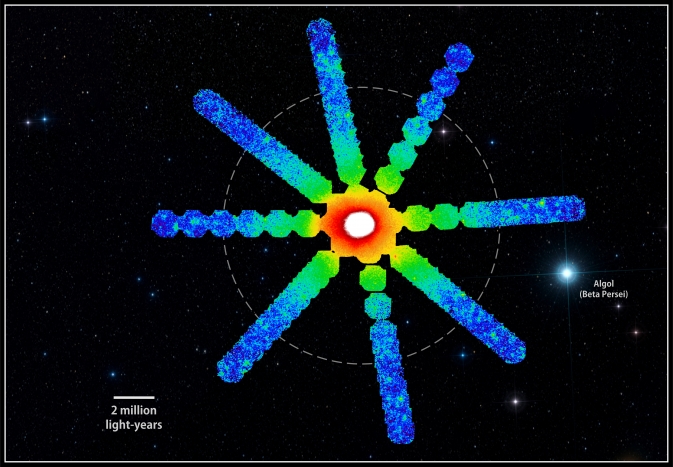
Suzaku explored faint X-ray emission along eight different directions in the Perseus Galaxy Cluster. (Credit: NASA/ISAS/DSS/O. Urban et al., MNRAS)
Follow-up study of the Perseus cluster, now using Suzaku data from center to the outer edge in 8 directions, showed that the fraction of iron in the X-ray emitting gas ("iron abundance") is remarkably uniform across the cluster. Iron is mostly from Type Ia supernovae – such uniform iron abundance indicates that iron was created in Type Ia supernova before the cluster formed.
Stories featuring supernova remnants
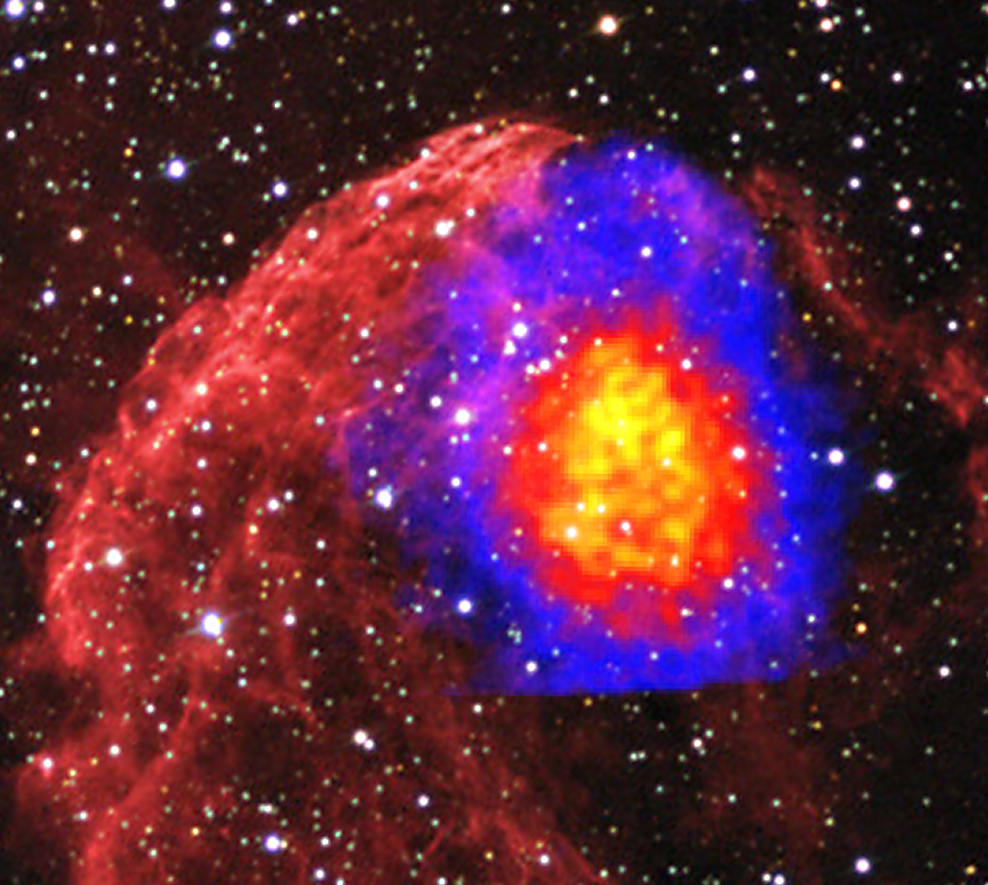
Close-up image of the X-ray emission in the supernova remnant known as the Jellyfish Nebula. (Credit: JAXA/NASA/Suzaku, Tom Bash and John Fox/Adam Block/NOAO/AURA/NSF)
Usually, a supernova is gradually heated as the ejecta runs into interstellar medium. Because the density of a supernova remnant is extremely low in terrestrial standards, it takes time for the ionization level to catch up with the new temperature. This leaves plasmas in supernova remnants under-ionized (more electrons are retained by atoms than one would expect for the temperature). However, with Suzaku data, a team based in Japan has identified several supernova remnants in which atoms are over-ionized – likely the result of an early fireball stage and rapid cooling.
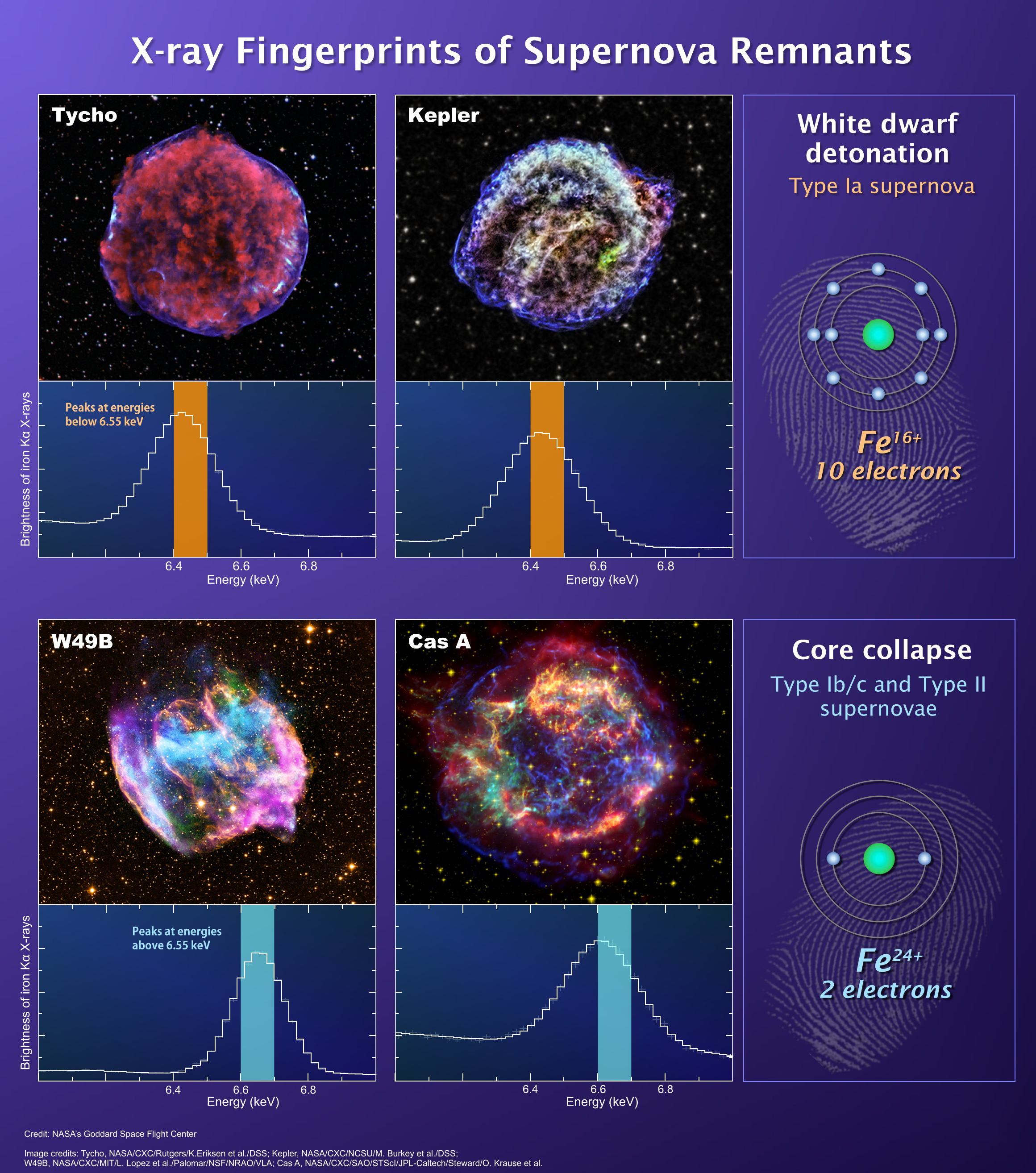
Suzaku observations of 23 supernova remnants, including those shown here, reveal a distinction between those from massive stars and those from white dwarfs. (Credits: NASA's Goddard Space Flight Center)
If we observe a supernova explosion, it is a routine matter to determine whether it is a core-collapse supernova or a thermonuclear (Type Ia) supernova. If you just observe a remnant, it is far trickier to do so, until now. These authors found a systematic difference in how ionized the iron atoms are between Type Ia and core-collapse supernova remnants, presumably because the ejecta from core collapse supernovae collide with the slower wind from the progenitor star.
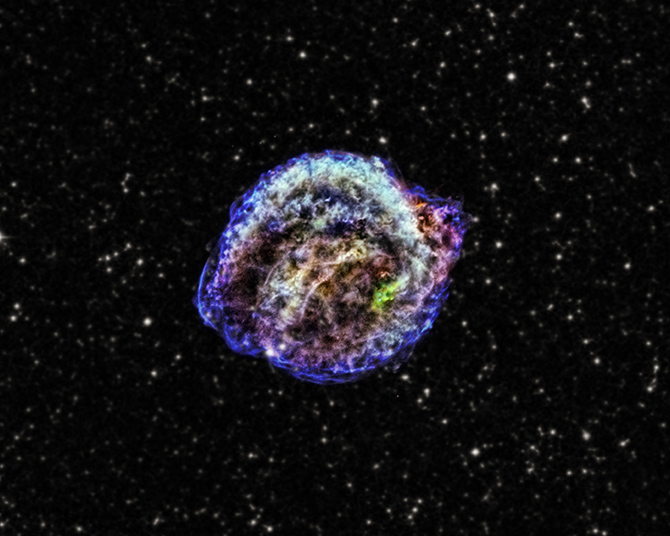
Composite of image of Kepler's Supernova in low (red), intermediate (green) and high-energy (blue) X-rays. The background is an optical star field taken from the Digitized Sky Survey. (Credit: X-ray: NASA/CXC/NCSU/M.Burkey et al.; optical: DSS)
Type Ia supernovae are thermonuclear explosions of white dwarf stars. They produce a lot of iron, and a lesser amount of other elements such as chromium and manganese. The yields of such trace elements turn out to provide valuable information about the progenitors of these explosions. Scientists used Suzaku to measure the chromium to manganese ratios first for Tycho's supernova remnant, then for Kepler's supernova remnant, to infer the metallically (the fraction of elements other than hydrogen and helium) of the stars that became the white dwarfs that exploded. A later
related study used the amount of nickel and manganese in a third supernova remnant to infer that this supernova likely happened in a binary of a white dwarf and a normal star.
Stories featuring accretion powering X-ray emission
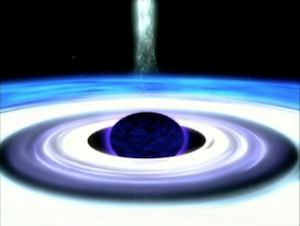
Still image from an animation of accretion around a black hole. (Credit: NASA/GSFC)
The fact that Suzaku was well suited to the study of reflection in AGN has been widely appreciated since the early days of the mission, and several groups applied this technique to well-known, bright AGN within the first year. In particular, the spin of the accreting black hole – the only property other than mass that characterizes an astronomical black hole – can be inferred from these data. This technique has become well established during the course of the Suzaku mission, although some researchers worry that absorption effects might be distorting the apparent shape of the iron line.
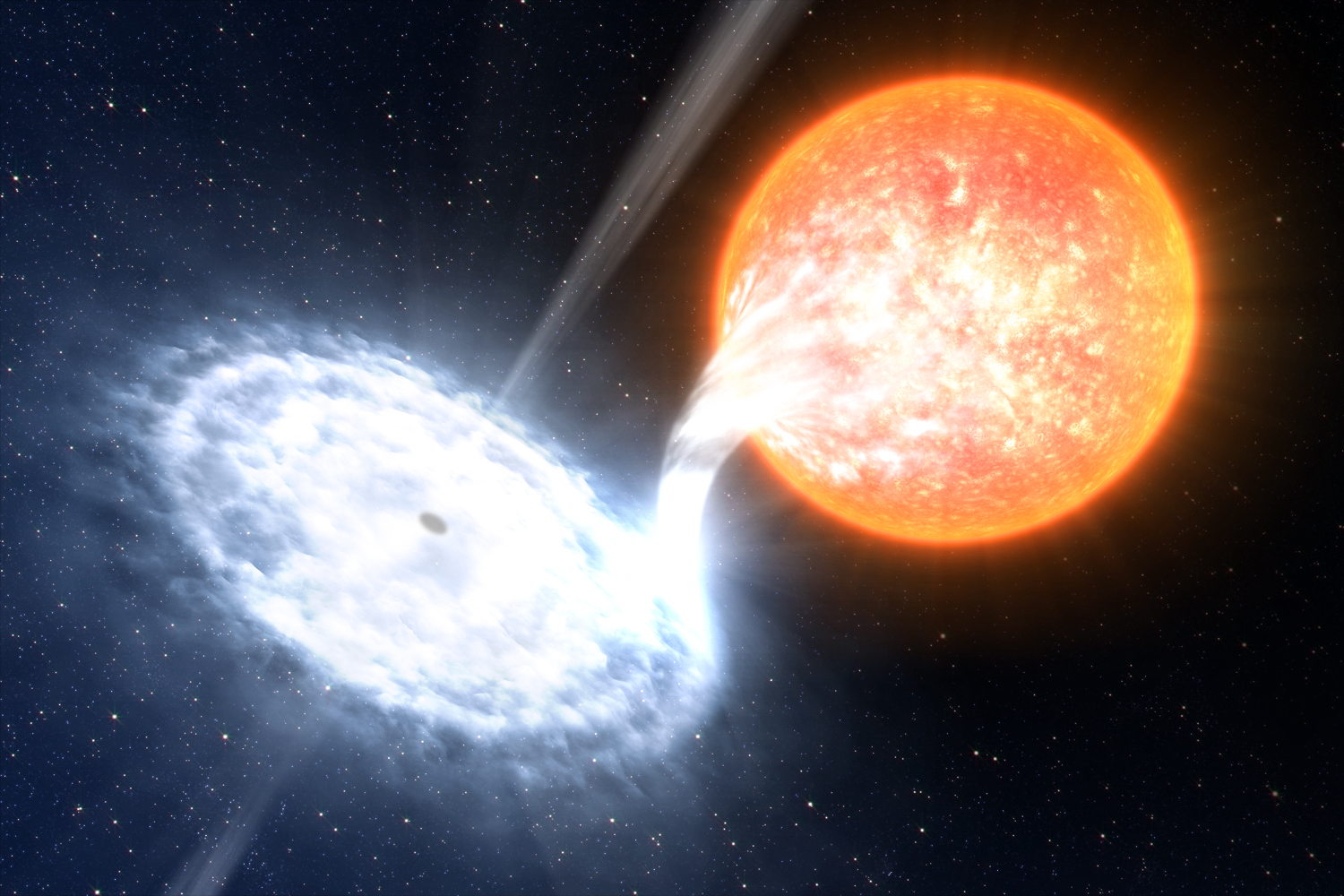
Artist's impression of GX 339-4, which is among the most dynamic binaries in the sky. (Credit: ESO/L. Calçada)
General relativity dictates how close the inner edge of an accretion disk can be to the black hole it surrounds. However, the physics of the disk itself can move the inner edge away from this ultimate limit. This is widely thought to happen when the amount of matter flowing through the disk decreases. This study of a black hole binary, in which the accretion rate is known to vary by a large factor, is an example of how Suzaku data can be used to quantify this effect.
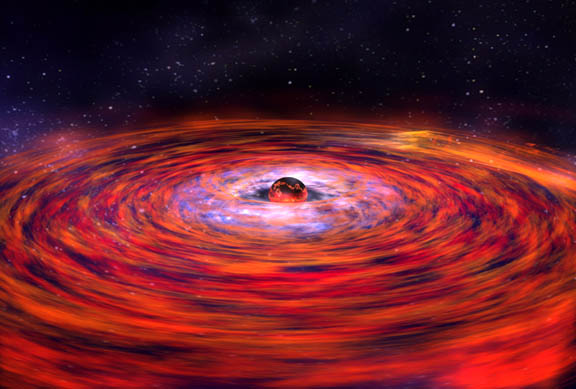
An artist depiction of a disk of hot gas whipping around a neutron star. (Credit: NASA/Dana Berry)
Probing the Exotic Matter inside Neutron Stars
If an accretion disk surrounds a neutron star, then the inner radius of the accretion disk must be equal to or greater than the radius of the neutron star. This truism can be a powerful tool in studying the interior of neutron stars, because the radius of a neutron star is determined by the exotic physics of nuclear-density matter. These studies showed that studying the accretion disk around a neutron star could help improve our understanding of the neutron star interior.
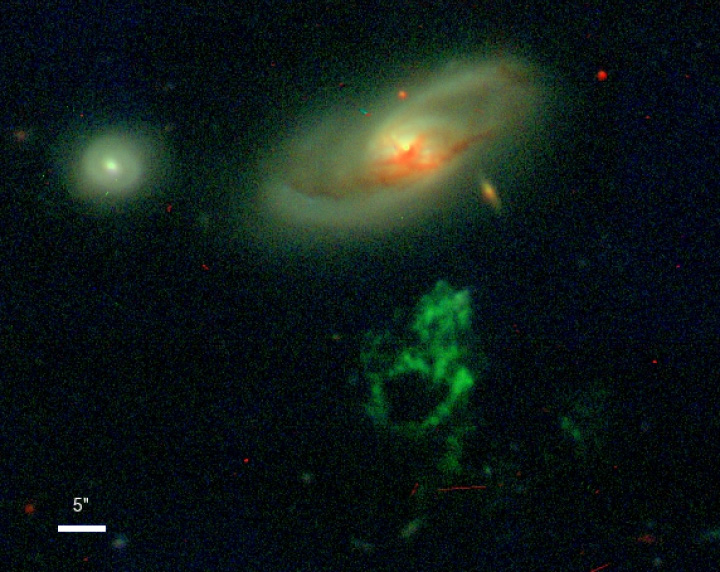
Ground-based optical image of IC 2497 (top), Hanny's Voorwerp (bottom) and a nearby companion galaxy (left). (Credit: WIYN/William Keel/Anna Manning)
Hanny's Voorwerp is the poster child of the Galaxy Zoo project – a citizen science project that which asked thousands of volunteers to classify galaxies, something human vision is very good at doing. A few objects that defied normal classification schemes were discovered, including Hanny's Voorwerp. One possibility was that it was a nebula ionized by a powerful quasar in a neighboring galaxy, IC 2497, which is hidden from our view by gas and dust. But it's almost impossible to hide X-rays with energies above 10 keV – and no such emission was found in a Suzaku observation. The authors conclude that IC 2497 likely was a quasar 70,000 years or so ago, but not any more.
Publication Date: July 2015












